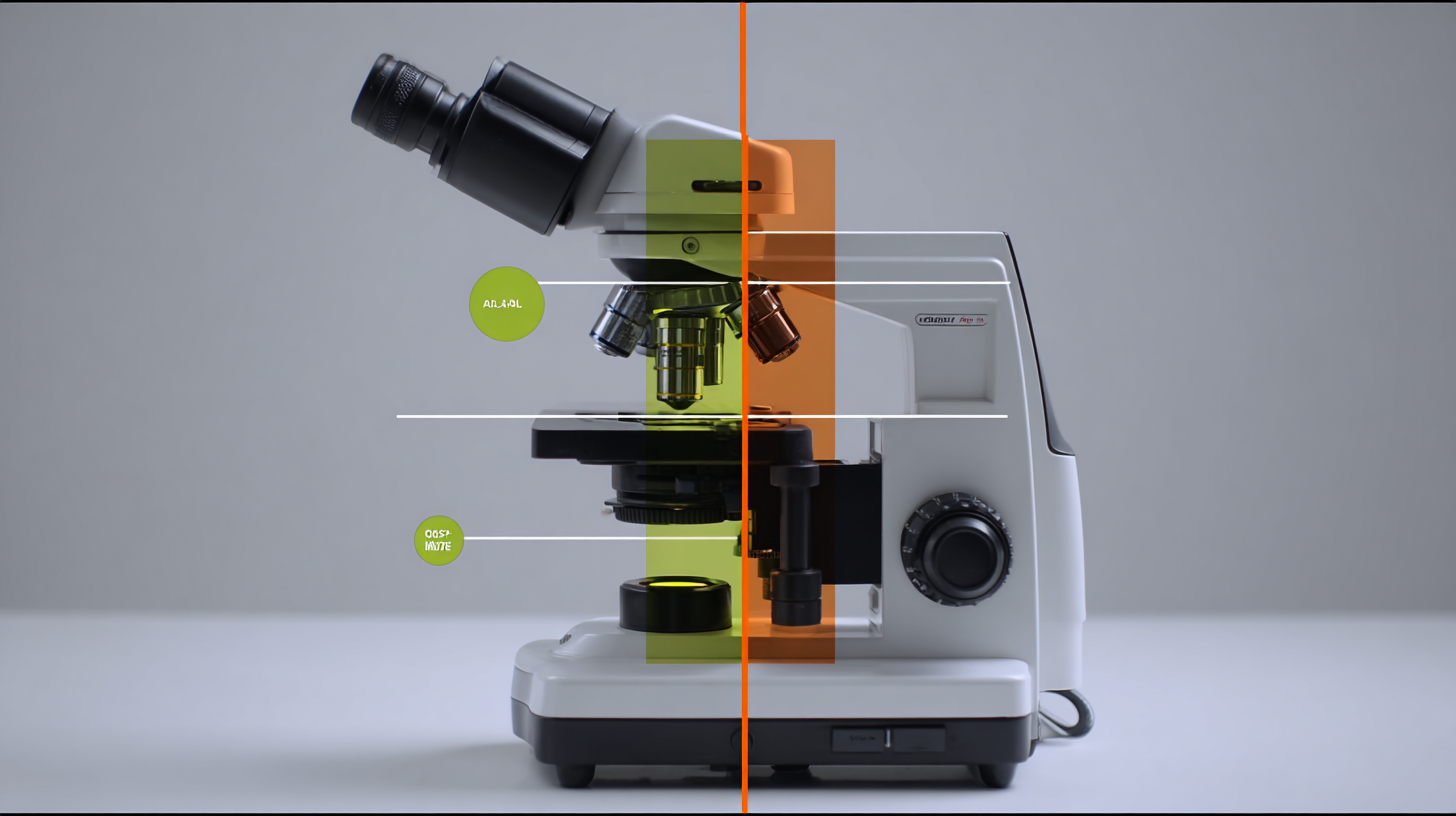- Home Page
- Company Profile
-
Our Products
- Microscope
- CONFOCAL MICROSCOPES
- Trinocular Upright Metallurgical Microscope
- Portable Grooved Metallurgical Microscope
- Cell Culture Imaging System
- Metallurgical Microscope
- Projection Microscope
- Student Stereo Microscope
- BINOCULAR STEREO ZOOM MICROSCOPE
- PCB Inspection Video Stereoscope Microscope
- SPINNERET MICROSCOPE
- Penta Head Microscope/ Multi view Head Microscope
- Research Polarising Microscope
- Senior Dissecting Microscope
- Dissecting Microscope
- Motorized Comparision Microscope
- Sieves Digital Microscopes
- Advance Inverted Tissue Culture Microscope
- Advance Stereo Zoom Microscope
- Student Projection Microscope
- Inverted Metallurgical Microscope
- Measuring Microscope
- Digital Spinneret Inspection Microscope
- Portable Inverted Tissue Culture Microscope
- Binocular Inverted Tissue Culture Microscope
- Student Compound Microscope
- Trinocular Stereozoom Microscope
- Advanced Research Microscope
- Gemological Microscope
- Polarizing Projection Microscope
- Senior Inspection Spinneretscope
- Confocal Microscope
- Senior Projection Microscope
- Toolmaker's Microscope
- Research Microscope
- Stereo Inspection Microscope
- Student Medical Microscope
- Digital Biological Microscope RXLr-4D
- Toolmaker Microscope Large
- Stereo Inspection Scope
- Trinocular Research Microscope
- Portable Metallurgical Microscope
- Binocular Research Microscope
- Student School Microscope
- Inverted Tissue Culture Microscope
- Projection Microscope
- Laboratory Microscope
- Decca Head Microscope
- Advanced Research Material Microscope
- Microtomes
- Semi Automatic Rotary Microtome
- Senior Precision Rotary Microtome
- Rocking Microtome
- Rotary Microtome Erma Type
- Freezing Microtome
- Fully Automatic Rotary Microtome
- Manual Rotary Microtome RMT-25
- Advance Rotary Microtome
- Hand Table Microtome
- Knife Sharpener Microtome
- Sliding Miocrotome
- Slide Staining Machine
- Rotary Microtome
- CRYOSTAT MICROTOME
- Optical Instruments
- Tissue Processor Machine
- Microscope Accessories
- Histopathological Equipment
- Lab Instrument
- Radical Digital Turbidity Meter
- Radical Microprocessor Dissolved Oxygen Meter
- Digital Photo Colorimeter
- Tap Density Tester
- Serological Water Bath
- Magnetic Stirrer
- Dual Channel Flame Photometer
- pH or mv or Conductivity
- Round Centrifuge
- Radical Disintegration Test Apparatus
- Digital Slide Scanner
- Precision Water Bath
- Incubator Shaker Water Bath
- Hemoglobin meter
- Microprocessor Colony Counter
- PASS BOX DYNAMIC
- Radical Microprocessor Colony Counter
- Bulk Density Apparatus
- Laboratory Rectangular Hot Plates
- Tablet Dissolution Test Apparatus
- Hemoglobin Meter (Sahli's)
- Micro Centrifuge 16000 R.P.M.
- Revolutionary General Purpose Digital Centrifuge
- Vortex Shaker
- Rectangular Water Bath
- Heating Mantel
- Digital Spectrophotometer
- Haematocrit Centrifuge
- Water Distillation with Metal Heater
- Hand Specimen Leveler Press
- GROSSING TABLE
- COOLING PLATE
- MICROPROCESSOR PH METER
- DIGITAL FLAME PHOTOMETER
- pH/mV/TEMPERATURE TESTER
- DIGITAL PH, CONDUCTIVITY & TEMPERATURE METER
- Radical Auto Karl Fischer Titrimeter
- Stereo Zoom Microscope
- Jewellery Making Microscope
- Binocular Stereo Microscope
- Advanced Stereo Zoom Microscope
- Articulated Trinocular Stereo Zoom Microscope
- Digital 3D Inspection Microscope
- Binocular Stereo Microscopes
- Motorized Stereo Microscopes
- Trinocular Microscope
- Stereo Inspection Microscope
- Stereo Microscope
- Digital 3D Inspection Microscope RSZ-3D
- Stereo Zoom Microscope RSM-8
- Polarising Microscopes
- Lab Consumables
- Profile Projector
- Optical Profile Projector
- Vertical Profile Projector
- Profile Projector RPP-500
- Profile Projector
- PROFILE PROJECTOR
- Universal Profile Projector
- Bench Type Profile Projector
- Charpy Profile Projector
- High Sharpness Profile Projector
- Profile Projector
- Horizontal Profile Projector
- Digital Profile Projector
- Radical Profile Projector
- Coaxial Profile Projector
- Anotomy Model
- Metallurgical Microscope
- Microscope
- Contact Us

The Ultimate Comparison of Best Polarizing Microscopes for Enhanced Scientific Research
In the realm of scientific research, the ability to observe and analyze materials at a microscopic level is essential for gaining deeper insights into their properties and behaviors. One of the key instruments that researchers rely on is the Polarizing Microscope. This advanced tool allows scientists to investigate optical characteristics of various specimens, particularly those that are anisotropic. With the increasing complexity and demand for precision in scientific studies, choosing the right polarizing microscope becomes crucial.

This blog aims to provide an ultimate comparison of the best polarizing microscopes available, highlighting their features, benefits, and potential applications. By equipping researchers with the knowledge of these instruments, we can enhance the quality of scientific research and encourage innovative discoveries in fields such as materials science, geology, and biology.
Table of Contents
[Hide]
The Impact of Advanced Polarizing Microscopes on Scientific Discoveries in 2025
The Impact of Advanced Polarizing Microscopes on Scientific Discoveries in 2025
As we move into 2025, the role of advanced polarizing microscopes in scientific research has become pivotal. These instruments are not only enhancing the resolution of microscopic images but are also enabling researchers to observe dynamic processes in real-time. With improvements in optics and imaging technology, scientists can now uncover intricate details of materials, biological samples, and synthetic compounds that were previously obscured.
Tips: When selecting a polarizing microscope, consider the specific needs of your research. Look for models that offer versatile polarization options and compatibility with various imaging techniques. Additionally, advanced software integration for image analysis can significantly streamline your workflow and enhance your data interpretation.
Moreover, the application of these advanced microscopes extends beyond traditional fields such as geology and biology. Innovative uses in materials science and nanotechnology are emerging, allowing researchers to analyze novel materials at the microscopic level. The capability to visualize stress patterns and crystal structures will drive breakthroughs in material development and sustainability.
Tips: Always keep the calibration of your polarizing microscope in check. Regular maintenance not only extends the life of your equipment but also ensures accuracy in your findings. Experimenting with different lighting setups can also reveal previously unnoticed details in your specimens.

Key Technological Innovations Shaping Polarizing Microscopes for Enhanced Imaging
In recent years, polarizing microscopes have undergone significant technological innovations that have transformed the way scientists analyze and interpret data. One critical advancement is the incorporation of advanced optical components, such as high-index lenses and specialized polarizers that enhance contrast and resolution. These improvements allow researchers to examine even the most delicate materials, such as crystals and fibers, with unprecedented clarity. Such precision is crucial for disciplines ranging from geology to biology, where understanding microscopic structures leads to groundbreaking discoveries.
Another notable innovation is the integration of digital imaging technology into polarizing microscopes. Modern systems now feature high-resolution cameras that can capture detailed images in real-time, facilitating quicker analysis and data sharing among researchers. Coupled with advanced software for image processing and analysis, these digital enhancements dramatically improve workflow efficiency. The ability to visualize and manipulate data with user-friendly interfaces not only accelerates research but also opens up new avenues for collaboration across scientific disciplines. As these technologies continue to evolve, the potential for polarizing microscopes to contribute to scientific research will only expand, paving the way for deeper insights into the microscopic world.
Analyzing Industry Data: The Growing Demand for Polarizing Microscopes in Research Labs
The demand for polarizing microscopes in research labs has seen a notable surge, driven by their critical applications in various scientific fields. As highlighted in recent trends, these advanced microscopes are not only instrumental in characterizing materials but are also essential tools in forensic science. Analyzing trace evidence, such as gunshot residues and hair strands, requires the precision that polarizing microscopes can uniquely provide. Their ability to discern minute differences in samples can lead to breakthroughs in criminal investigations, showcasing their indispensable role in enhancing scientific research.
Moreover, as researchers increasingly focus on the intricate details of samples, the functionality of polarizing microscopes becomes paramount. With capabilities to analyze the optical properties of materials, they allow scientists to uncover information that would otherwise remain hidden. The integration of these tools in various laboratories reflects a growing recognition of their value, fostering a more comprehensive understanding of both materials and biological specimens. As the landscape of research evolves, polarizing microscopes stand out as an essential asset in pushing the boundaries of science.
The Ultimate Comparison of Best Polarizing Microscopes for Enhanced Scientific Research
| Model | Magnification Range | Optical System | Light Source | Price Range | Research Focus |
|---|---|---|---|---|---|
| Model A | 10x - 100x | Plan Achromatic | LED | $3,500 - $4,000 | Mineralogy |
| Model B | 5x - 200x | Infinity-corrected | Halogen | $2,800 - $3,200 | Biology |
| Model C | 20x - 1000x | Achromat | LED | $4,500 - $5,000 | Petrology |
| Model D | 10x - 500x | Semi-plan | Xenon | $3,000 - $3,500 | Material Science |
Alternative Microscopy Techniques: When to Choose Polarizing Microscopes vs. Other Methods
When it comes to scientific research, choosing the right microscopy technique is crucial for obtaining accurate results.
Polarizing microscopes are particularly valuable for studying materials that exhibit birefringence, such as minerals, crystals, and biological structures. Their ability to enhance contrast and reveal details that are otherwise invisible with conventional light microscopy makes them an essential tool in fields like geology and materials science. Polarizing microscopy allows researchers to analyze structural properties and detect specific components in samples, thereby providing insights into their composition and behavior.
However, there are scenarios where alternative microscopy techniques may be more appropriate. For instance, fluorescence microscopy is ideal for studying cellular structures and processes in live specimens by using fluorescent dyes that light up specific components. Scanning electron microscopy (SEM) provides high-resolution, three-dimensional images of surfaces, making it valuable for materials science and nanotechnology applications. Researchers should consider the specific requirements of their study—such as the type of sample, the desired resolution, and the information needed—when choosing between polarizing microscopes and other methods. Each technique offers unique advantages, and a thorough understanding of these can lead to better-informed decisions in research design.
Future Trends: Predictions for Polarizing Microscope Development and Market Growth through 2030
As we look towards 2030, the landscape of polarizing microscope technology is set to undergo significant transformations fueled by advancements in material science and imaging techniques. The integration of artificial intelligence and machine learning into polarizing microscopes will enable researchers to analyze images with unprecedented accuracy and speed. These innovations will not only enhance the resolution and contrast of samples but also streamline the workflow in laboratories, allowing scientists to focus more on interpretation rather than tedious image processing tasks.

Moreover, the market for polarizing microscopes is anticipated to expand substantially as industries such as material science, biology, and geology increasingly recognize their value. With a growing emphasis on automation and remote accessibility, manufacturers are expected to develop more versatile and user-friendly models that cater to a wider range of applications. As educational institutions and research sectors invest more in advanced microscopy techniques, the demand for innovative polarizing microscopes will likely experience a sustained boost, paving the way for breakthroughs in scientific research and technology.
Contact Us
- 9th Milestome, Ambala-Jagadhri Road, P.O.- Khudda Kalan, NH-444A,Ambala Cantt - 133104, Haryana, India
- Phone : 08045479132
- Mrs POONAM BHANDARI (Incharge - Mktg & Sales )
- Mobile : 08045479132
- Send Inquiry
GST : 06AACCR8985N1ZI
Our Products
RADICAL SCIENTIFIC EQUIPMENTS PVT. LTD.
All Rights Reserved.(Terms of Use)
Developed and Managed by Infocom Network Private Limited.
Developed and Managed by Infocom Network Private Limited.



